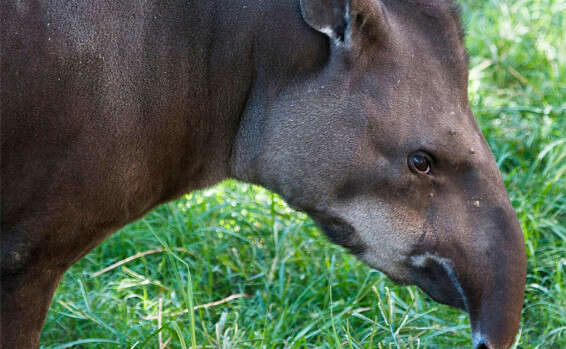Escape the Amazon Fires: Meet the Rare Animals in the Wild Rainforest - Before It's Too Late
Photo by John Novis, Greenpeace
This past summer, the fires that raged at an unprecedented rate in the Amazon forest and the severe environmental disaster they caused were shocked worldwide. 99 percent of the fires, it was reported, were ignited by humans "intentionally or accidentally."
Last month, the Brazilian Space Research Agency (INPE) released official data on the Amazon Forest Invasion between August 2018 and July 2019, and the numbers are staggering: In one year, 9,762 square kilometers were burned. To understand the size, that's about 3,820 daily football pitches, or 1.4 million plots a year, an increase of about 30 percent from the same period last year, and the highest rate of rainforest destruction recorded since 2008.
Cristian Mazetti, Greenpeace's Amazon Conservation Director, warns: "We must immediately reverse the devastation trend and demand an effective plan to combat forest fires. And not only we, Brazilian corporations must take a stand and accelerate the process of cleaning up their production and supply chain."
The Amazon basin covers some 5.6 million square kilometers in nine states in South America. It contains about one-fifth of the world's freshwater, and serves as the home of the largest river system on Earth.
The world's largest rainforest - or as it is sometimes referred to as "the lungs of the world" - is considered essential to curb global warming, and is about 10 percent of the biodiversity known to man. It contains about 40,000 species of plants, 16,000 species of trees, 427 species of mammals, 1,294 bird species, 378 species of reptiles, 426 species of amphibians, and about 3,000 species of fish. Get to know some of them before it's too late.
Jaguar - The Big West Cat
The Jaguar is the largest cat in the western part of the Earth, and the largest after the Lions and Tigers. The males can reach 2.7 meters in length and weigh about 160 kg. The origin of the name Jaguar is an Indian word meaning "the one who can kill in one skip."
Jaguars hunt mostly at night. Their favorite prey is Capibara, but they will be happy to put their paws on elk, birds, crocodiles and fish as well.
Photo by Martin Katz, Greenpeace
Today, the Jaguar is present in 60 percent of its original area in the wild. He is considered by the World Conservation Association (IUCN) to be a "near-threat" species, and if its population rates continue to decline it is likely to move into the "endangered in the near future" category soon.
Brazilian tapir - about 300 kg
The Brazilian tapir is one of the largest mammals in South America, weighing 300 kg. The tapir is mainly active at night and is considered a solitary animal.
The menu for vegetarians is vegetarian and they are herb, plant and fruit lovers. The World Conservation Association considers tapir to be "a harm to nature," and even before the fires, its population rate has dropped 30 percent in the last 30 years.
Photo by John Novis, Greenpeace
Brazil National Bird
The Golden Conior Parrot is considered Brazil's national bird and a protected animal under state law. However, it is defined on the IUCN list as a "vulnerable animal" and faces a high risk of extinction. The Golden Conyor is considered to be an endemic species that exists in a limited distribution area, and most of its population is in one Amazon region called Pará. It is estimated that the golden conyour population has dropped by about 30 percent.
Photo: Iron Man
Squirrel monkey - exceptionally small
The tiny monkey, whose weight reaches up to a pound, is considered endemic to Brazil and Bolivia. Squirrel monkeys live in groups of 20 to 75 individuals, spending most of the day searching for insects and tiny animals. According to the IUCN list, it is "close to threatened" and will soon fall into the "threatened" category. It is estimated that over the past 25 years his population has dropped by about 25 percent.
Photo: Greenpeace
Podocnemys yellow dots
This is one of the largest watercourses in the Amazon rivers, reaching 45 cm in length and weighing up to 8 kg. It is characterized by a black face dotted with yellow dots, and the species of turtles are determined by the temperature at which the egg will hatch. On the IUCN list, the turtle is considered a "vulnerable animal" and faces a high risk of extinction.











/cloudfront-eu-central-1.images.arcpublishing.com/prisa/KMEYMJKESBAZBE4MRBAM4TGHIQ.jpg)


/cloudfront-eu-central-1.images.arcpublishing.com/prisa/EXJQILQR5QI7OMVRTERD7AEZAU.jpg)
